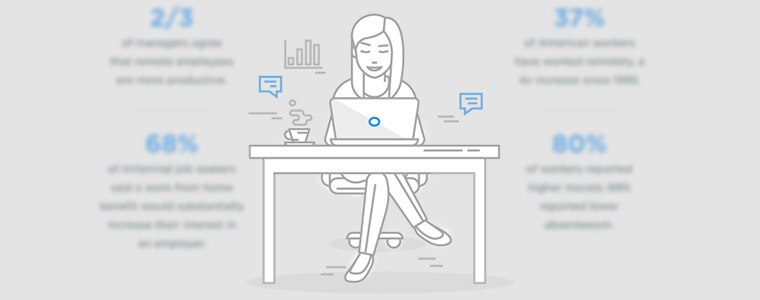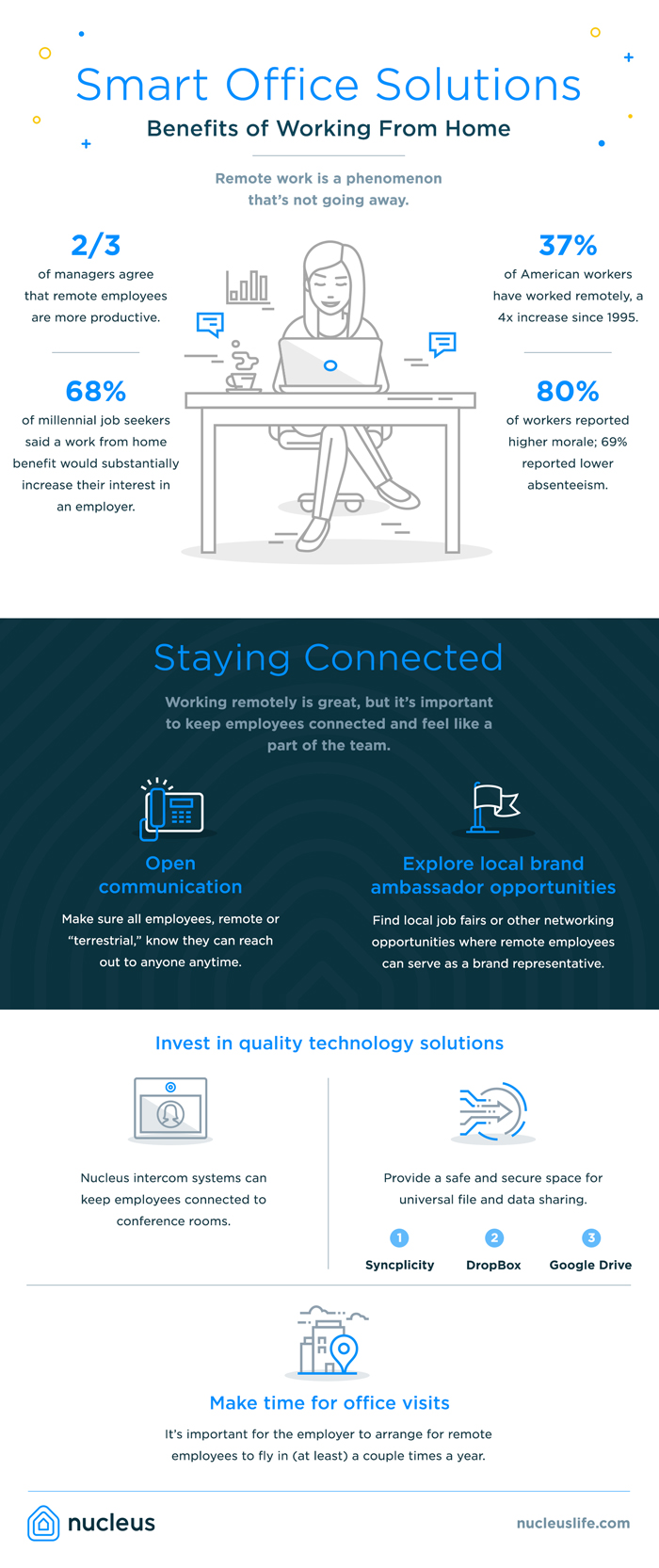Why working remotely works [infographic]

by Sarah Allen
Working from home has become a global phenomenon. A recent study from Polycom shows that almost a full third of employees around the globe are regularly working remotely, and almost two-thirds have some sort of flexible work schedule. Clearly the concept of the workplace is changing both rapidly and dramatically.
This change has brought about a lot of positives: productivity is up and stress is down. Two-thirds of managers agree that remote workers have seen increases in productivity, while a full 82% of employees report lower stress levels. Giving your employees the option of working remotely has been shown to reduce attrition rates, decrease overhead costs, and increase employee happiness.
The new challenge then becomes: how do you keep your employees connected and engaged as part of a cohesive team? Unsurprisingly, communication is key. With almost 80% of employees working on a team with someone based in a different office, developing inclusive communication strategies and workflows is essential to ensuring your team is up-to-date. Chat apps like Slack or Skype have become essential office tools regardless of whether your employees work remotely or not. Many companies are now using online collaboration apps like Google’s G Suite to increase productivity and coordinate document organization.
If you’re looking to draw a younger workforce as part of your recruiting process, a flexible work schedule is a key benefit. Over two-thirds of millennials reported a work-from-home (WFH) benefit would “substantially increase their interest in an employer.” For job seekers looking for a more casual work environment, WFH might be just the opportunity you need to gain their attention.
Looking for more tips for remote employees? Check out the graphic from Nucleus below with stats and info on working from home.
